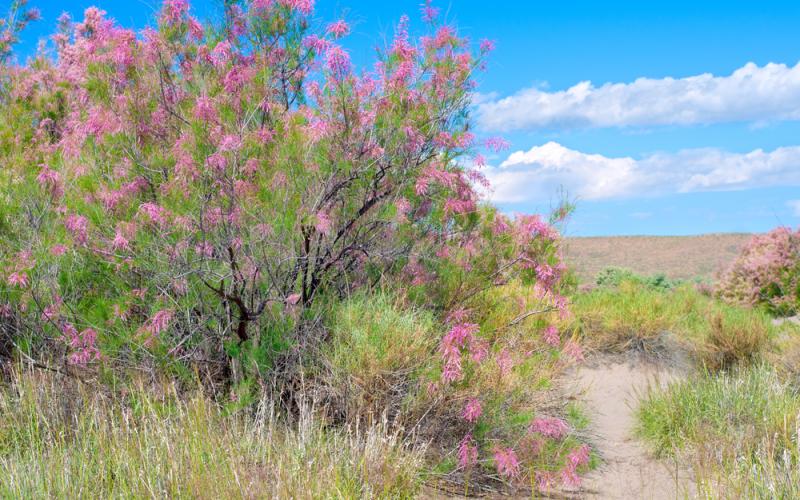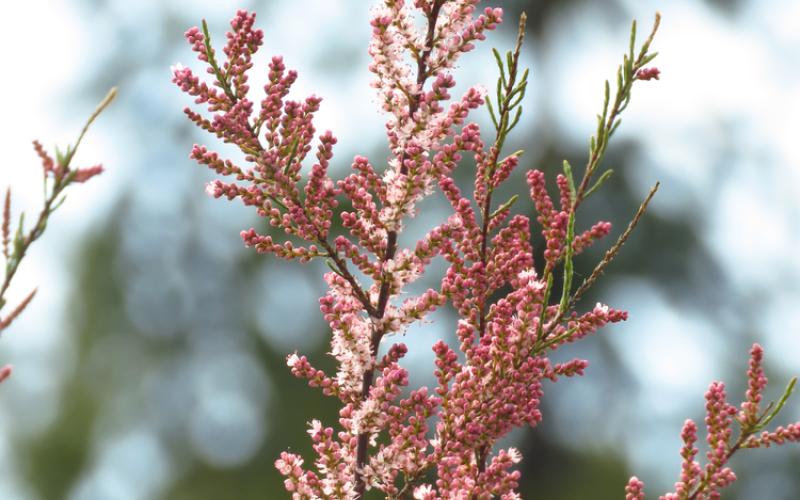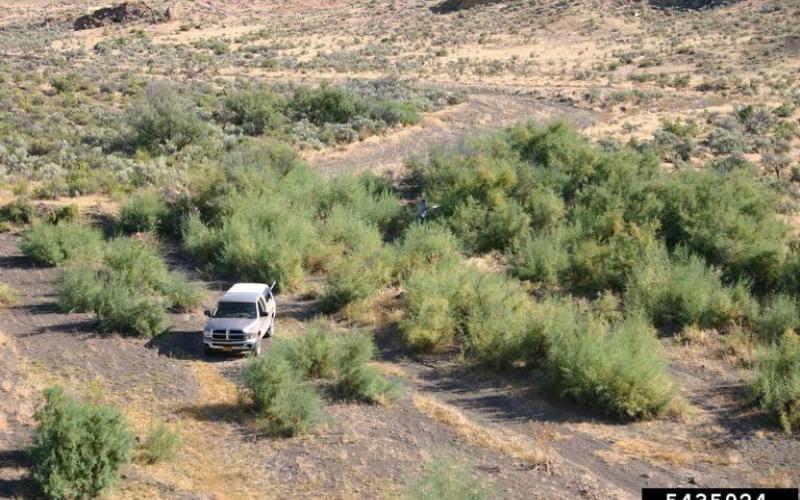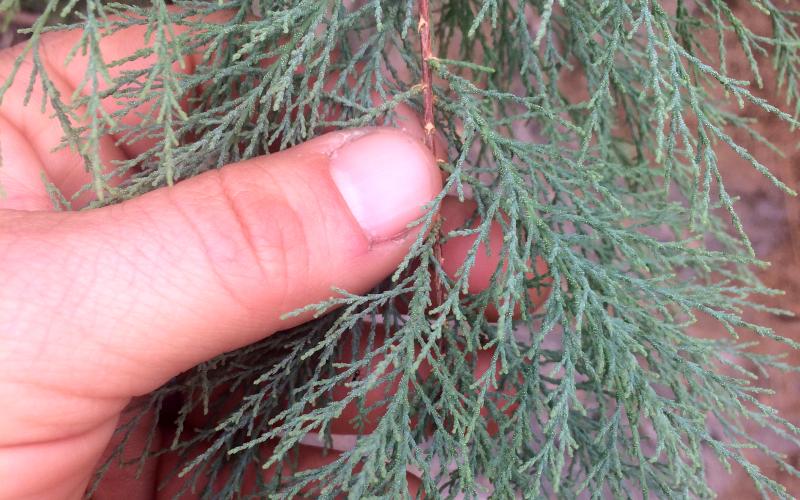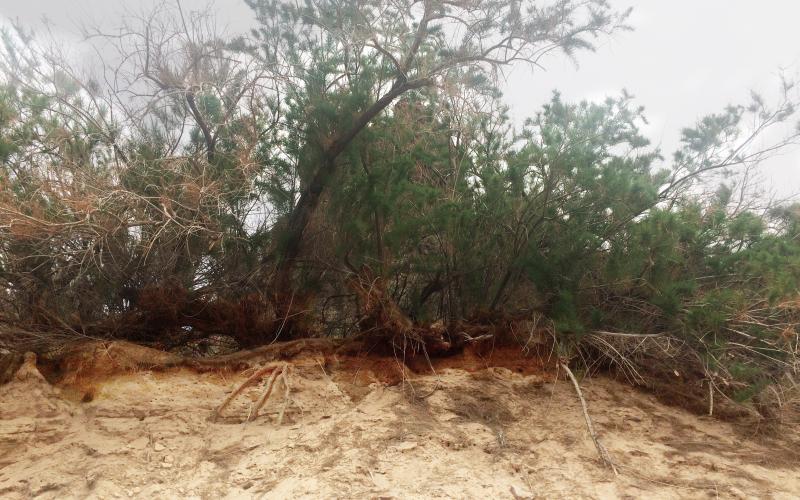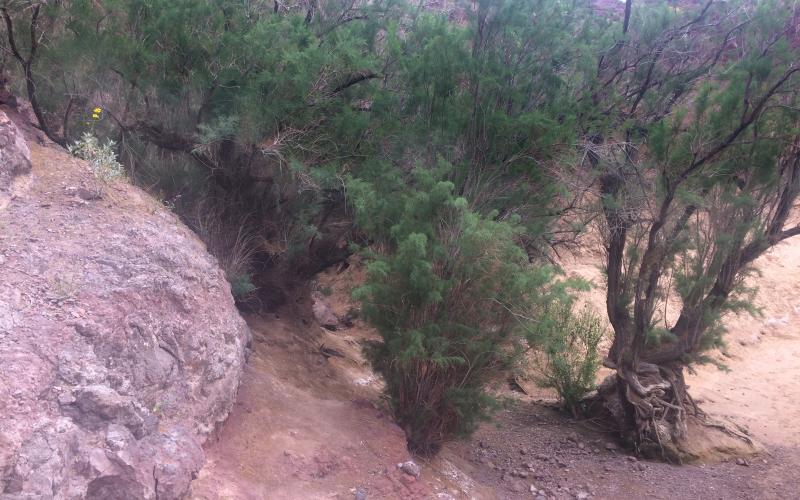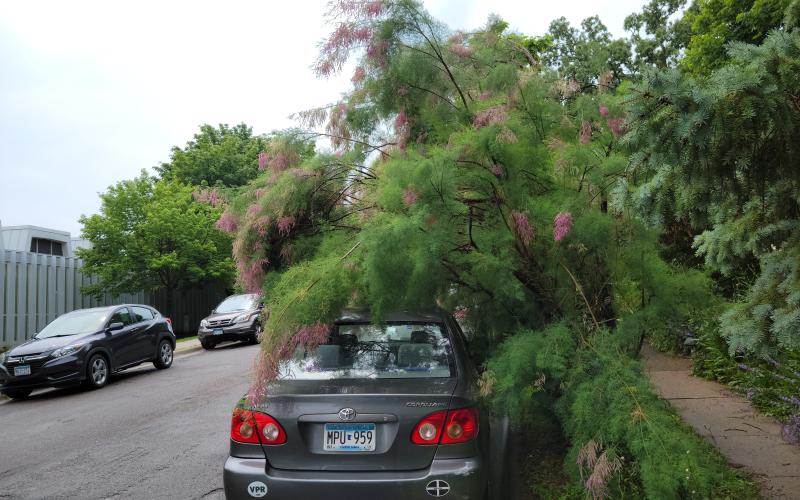Common names: Saltcedar, salt-cedar, tamarisk, tamarix
Scientific name: Tamarix ramosissima Ledeb.
Legal status
Propagation and sale of this plant are prohibited in Minnesota. Transportation is only allowed when in compliance with Minnesota Statute 18.82. Although Restricted Noxious Weeds are not required to be controlled or eradicated by law, landowners are strongly encouraged to manage these invasive plants on their properties to reduce spread into new areas.
Background
Saltcedar is a long-lived deciduous shrub or small shrub-like tree, with a native range of western Europe, the Mediterranean, and temperate Asia. It was originally introduced in the 1800s to the western United States as a landscape plant, a windbreak, and for erosion prevention. It is difficult to eradicate saltcedar once it is established.
Description
- Small shrub or shrub-like tree, typically growing 6-15 feet tall. It has a growth form described as “wispy” or “disheveled.”
- Foliage is deciduous, scale-like leaves which resemble those of juniper or cedar. Bluish-green in color, leaves are 1.5-3.5mm long, and they contain small salt-secreting glands located on the leaf undersides.
- Branches are slender and smooth with a reddish-brown color and tend to break off easily.
- Bark of trees become furrowed with age.
- Flowering occurs as soon as March in some areas and flowers persist until September. Flowers are pink and sometimes white, they occur as clusters along the primary or secondary branches. Inflorescences have five petals and five sepals.
- Saltcedar has deep, adventitious roots that extend to the water table.
Habitat
Saltcedar is quite tolerant of drought and salt. Though it grows in a variety of soil conditions, it does best in sandy, loam soils. It prefers full sun and does not do well in the shade.
Means of spread and distribution
Saltcedar reproduces via seed and from root sprouting. Each tree can produce up to 600,000 small seeds annually. Seeds are tiny and dispersed by either water or wind via small tufts of hair at one end of the seed. Saltcedar has adventitious roots, roots that can grow from any part of the plant’s tissue. It can easily be dispersed to new locations by flood events.
The west, southwest, and great plains regions of the United States are the primary nuisance range of saltcedar. There are a couple reports in western Minnesota of saltcedar naturalizing, though in Minnesota it is mainly seen as an ornamental in the Twin Cities metro and in other cities within the state.
Impact
Saltcedar has naturalized along floodplains, riverbanks, roadsides, and other disturbed areas. Where it is prevalent, saltcedar has many negative impacts on native plant and wildlife species. Its high seed production and rapid growth rates can quickly displace native plant species, especially in areas of high salinity or in areas with low water tables. As its common name may suggest, the leaves of saltcedar are covered in salt. When the trees drop their leaves, the salt covered leaves collect on the soil surface and salinity of the soil increases. This further leads to a lack of germination of native species.
Saltcedar also has environmental effects on the ecosystems it invades, most notably riparian or wetland areas. The roots of saltcedar bind gravel together, leading to erosion issues and an increased likelihood of flooding. The leaf litter and foliage of saltcedar is flammable, which, in wildfire conditions, encourages further spread of wildfire. Fire decreases native plant vegetation. Saltcedar seedlings resprout readily following fire, further encouraging their spread. The main taproot of saltcedar extends deep to the water table, and while actively growing, a single plant can use up to 200 gallons of water. Sites invaded by saltcedar typically become much drier and stream flows are reduced.
Lastly, saltcedar may have recreation impacts as well, especially in riparian areas.
Prevention and management
- Due to its advantageous properties when compared with native plants in areas it readily invades, eradication can be difficult once saltcedar becomes established.
- Small plants can be hand pulled and if uprooted, they should not resprout.
- Mechanical control in combination with chemical control will be the most effective method of removal.
- Cut-stump herbicide applications as well as basal bark applications have shown success in smaller infestations. In the western United States, dense stands have also been adequately controlled by aerial herbicide application.
- For chemical control, contact your local University of Minnesota Extension agent, co-op, or certified landscape care expert.
